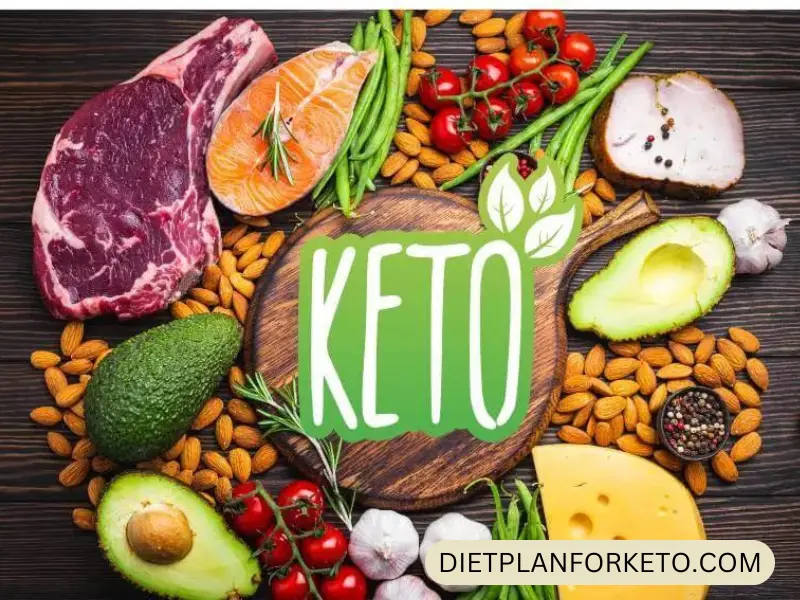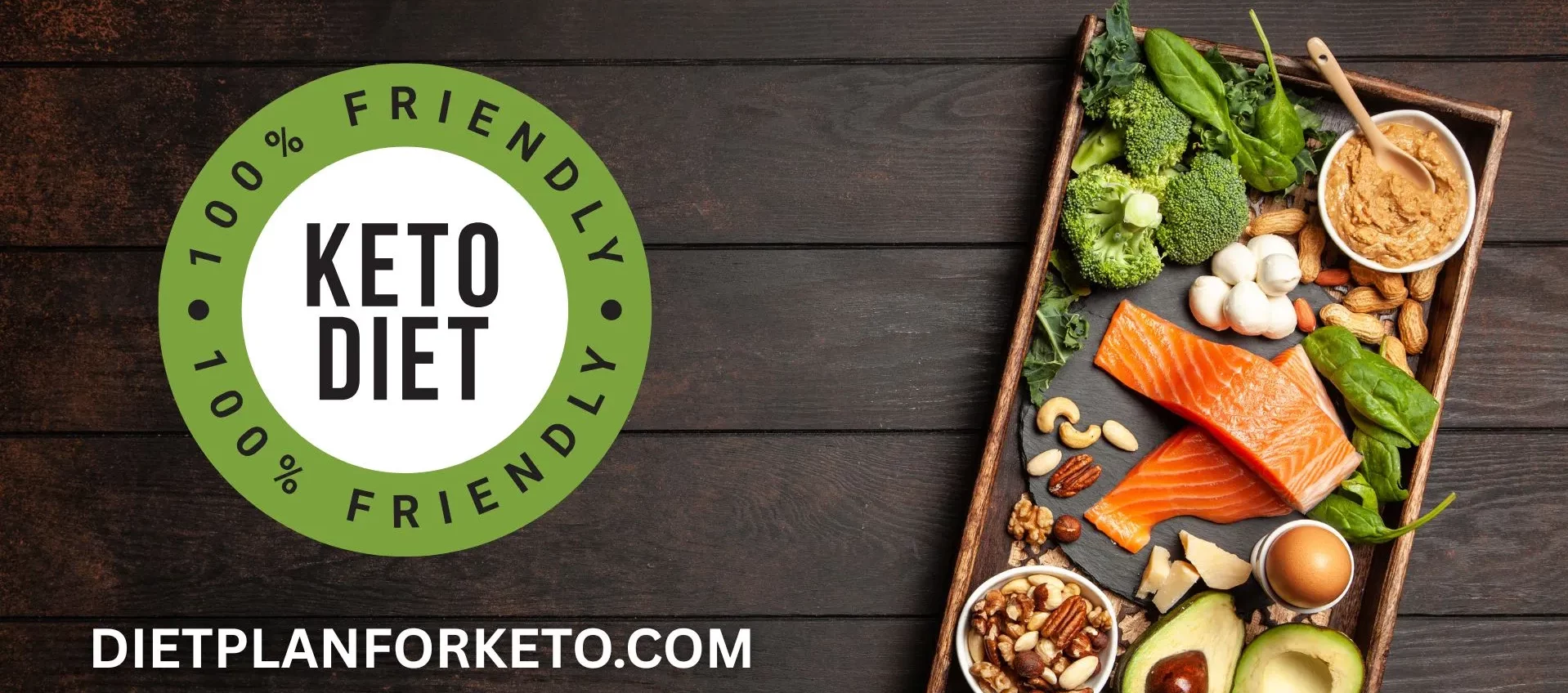The Importance of Vegetables on Keto
The ketogenic diet, commonly known as keto, is a low-carb, high-fat eating plan that can lead to significant weight loss and improved health markers. However, the focus on high-fat foods can sometimes overshadow the importance of vegetables, leading to a lower intake of these nutrient-dense foods.
Vegetables are essential on a keto diet because they provide vital vitamins, minerals, fiber, and antioxidants. They also help diversify your diet, making meals more interesting and satisfying. In this blog post, we’ll explore practical ways to incorporate more vegetables into your keto lifestyle.
Understanding the Role of Vegetables on Keto
While keto prioritizes fats and minimizes carbohydrates, not all carbs are created equal. Vegetables, particularly non-starchy ones, are low in net carbs and can fit seamlessly into a keto diet. Net carbs are calculated by subtracting fiber from total carbs, and since vegetables are high in fiber, they contribute fewer carbs than other foods. Vegetables also offer a wide range of health benefits, including:
- Nutrient Density: They are packed with essential vitamins and minerals.
- Fiber: Helps with digestion and satiety.
- Phytonutrients: Compounds that provide antioxidant and anti-inflammatory benefits.
Tips for Increasing Vegetable Intake on Keto
Here are some practical tips for increasing your vegetable intake while staying within the keto guidelines.
1. Focus on Low-Carb Vegetables
Not all vegetables are created equal on a keto diet. To keep your carbohydrate intake low, choose vegetables that are low in carbs. Leafy greens like spinach, kale, and lettuce are excellent options. Other great choices include broccoli, cauliflower, zucchini, asparagus, and bell peppers. These vegetables are not only low in carbs but also rich in essential vitamins, minerals, and antioxidants.
2. Use Vegetables as Substitutes
Vegetable substitutes can be a great way to enjoy keto-friendly versions of high-carb dishes. For example, use cauliflower rice instead of regular rice, zucchini noodles (zoodles) in place of pasta, or lettuce wraps instead of bread for sandwiches. These substitutions help reduce carb intake while still allowing you to enjoy your favorite meals.
3. Snack on Vegetables
Snacking can be a challenge on keto, but vegetables can come to the rescue. Raw vegetable sticks like celery, cucumber, bell peppers, and radishes are excellent low-carb snack options. Pair them with high-fat dips like guacamole or a keto-friendly ranch dressing to make them more satisfying.
4. Incorporate Fermented Vegetables
Fermented vegetables, such as sauerkraut and kimchi, are not only low in carbs but also beneficial for gut health due to their probiotic content. Adding a small serving of fermented vegetables to your meals can help diversify your vegetable intake and provide additional health benefits.
5. Try New Recipes and Cooking Methods
Experimenting with new recipes and cooking methods can make vegetable dishes more exciting. Grilling, roasting, sautéing, and steaming can enhance the flavors and textures of vegetables. Try keto-friendly recipes like stuffed bell peppers, cauliflower pizza crust, or creamy spinach with cheese.
6. Plan Your Meals
Meal planning is key to maintaining a balanced diet on keto. Plan your meals around a variety of vegetables to ensure you’re getting a range of nutrients. This practice can also help you avoid last-minute unhealthy food choices and keep you on track with your dietary goals.
7. Incorporate Vegetables into Every Meal
One effective way to ensure you’re getting enough vegetables is to include them in every meal. Start your day with a keto-friendly vegetable omelet using spinach, mushrooms, and bell peppers. For lunch, opt for a salad with mixed greens, cucumber, and avocado, topped with olive oil and a protein source like grilled chicken. Dinner can feature roasted vegetables like Brussels sprouts, cauliflower, and zucchini, paired with a fatty protein source.
- Breakfast: Add spinach or kale to your scrambled eggs or omelets. Consider making a green smoothie with avocado, spinach, and unsweetened almond milk.
- Lunch: Opt for salads with a base of mixed greens, topped with protein and healthy fats. Use high-fat dressings like olive oil or avocado-based dressings.
- Dinner: Make vegetables the star of the meal by creating dishes like cauliflower rice, zucchini noodles, or stuffed bell peppers.
- Experiment with Keto-Friendly Vegetable Recipes: Get creative in the kitchen by trying new recipes that highlight vegetables. Some ideas include:
- Use Vegetables as Substitutes for High-Carb Foods
- Cauliflower Rice: A versatile rice substitute.
- Zucchini or Cucumber Noodles: Great alternatives to traditional pasta.
- Lettuce Wraps: Use large lettuce leaves instead of bread or tortillas for sandwiches and wraps.
- Snack on Vegetables Keep raw veggies like cucumber slices, bell pepper strips, and celery sticks on hand for quick and easy snacks. Pair them with keto-friendly dips like guacamole, hummus, or a creamy spinach dip.
- Roast or Grill Vegetables for Extra Flavor Roasting or grilling vegetables can enhance their natural flavors, making them more appealing. Try roasting Brussels sprouts with olive oil and garlic or grilling zucchini and bell peppers with a sprinkle of seasoning.
- Blend Vegetables into Soups and Sauces Pureeing vegetables into soups and sauces is an excellent way to increase your intake without noticing. Use a variety of vegetables to make rich, creamy soups or to thicken sauces naturally.
8. Monitor Your Carbohydrate Intake
While vegetables are an essential part of a healthy diet, it’s still important to monitor your carbohydrate intake to stay in ketosis. Track your daily carb count and adjust your vegetable portions accordingly. Focus on non-starchy vegetables to maximize your nutrient intake without exceeding your carb limit.
Common Challenges and Solutions
Challenge: Finding vegetables that fit into the daily carb limit.
Solution: Focus on low-carb vegetables and measure portions to stay within your carb limits.
Challenge: Boredom with the same vegetables.
Solution: Experiment with different cooking methods, herbs, and spices to keep meals exciting.
Challenge: Convenience and preparation time.
Solution: Prep vegetables in advance, buy pre-washed greens, or consider frozen vegetables, which are just as nutritious.
Conclusion: Embracing Vegetables on Keto
Incorporating more vegetables into a keto diet doesn’t have to be challenging. By choosing low-carb, nutrient-dense vegetables and experimenting with different recipes, you can enjoy a varied and satisfying diet. Vegetables not only provide essential nutrients but also add color, texture, and flavor to your meals, making your keto journey more enjoyable and sustainable.
Remember, a successful keto diet is balanced and includes a variety of foods, with vegetables playing a crucial role in maintaining overall health. So, embrace the greens and discover the delicious potential of vegetables on keto!

Best Keto Vegetable Lunch and Dinner Recipes
The ketogenic diet, often referred to as the keto diet, focuses on high-fat, moderate-protein, and low-carbohydrate foods. While meats and cheeses are popular keto staples, vegetables also play a crucial role in providing essential nutrients without the excess carbs. Here, we explore some of the best keto vegetable recipes for lunch and dinner, perfect for anyone looking to maintain ketosis while enjoying delicious and nutritious meals.
1. Creamy Spinach-Stuffed Mushrooms
Ingredients:
- Large Portobello mushrooms
- Fresh spinach
- Cream cheese
- Mozzarella cheese
- Garlic
- Olive oil
- Salt and pepper
Preparation:
- Preheat the oven to 375°F (190°C).
- Clean the mushrooms and remove the stems.
- Sauté spinach with garlic in olive oil until wilted.
- Mix the sautéed spinach with cream cheese, salt, and pepper.
- Stuff the mushroom caps with the mixture and top with mozzarella cheese.
- Bake for 20 minutes until the mushrooms are tender and the cheese is melted and bubbly.
Nutritional Benefits:
- This dish is rich in iron, vitamin K, and antioxidants from spinach, while the mushrooms provide a good source of B vitamins and selenium.
2. Zucchini Noodles with Avocado Pesto
Ingredients:
- Zucchini
- Avocado
- Basil leaves
- Pine nuts
- Garlic
- Lemon juice
- Olive oil
- Parmesan cheese (optional)
- Salt and pepper
Preparation:
- Spiralize the zucchini into noodles and set aside.
- In a blender, combine avocado, basil, pine nuts, garlic, lemon juice, and olive oil. Blend until smooth.
- Toss the zucchini noodles with the avocado pesto. Add salt and pepper to taste.
- Optionally, sprinkle with Parmesan cheese for extra flavor.
Nutritional Benefits:
- Zucchini noodles are a low-carb alternative to pasta, while avocados provide healthy fats and a creamy texture. The basil and pine nuts add a dose of omega-3 fatty acids and antioxidants.
3. Cauliflower Fried Rice
Ingredients:
- Cauliflower
- Eggs
- Green onions
- Carrots (optional for those allowing a bit more carbs)
- Soy sauce or coconut aminos
- Garlic
- Ginger
- Sesame oil
- Peas (optional)
- Salt and pepper
Preparation:
- Pulse cauliflower in a food processor until it resembles rice.
- Heat sesame oil in a pan and sauté garlic and ginger until fragrant.
- Add cauliflower rice and cook until slightly tender.
- Push the rice to the side of the pan and scramble eggs in the empty space.
- Mix the scrambled eggs into the cauliflower rice and add soy sauce or coconut aminos, green onions, and any optional vegetables.
- Stir-fry until well combined and heated through.
Nutritional Benefits:
- Cauliflower is a versatile vegetable that is low in carbs and high in fiber. This dish is also packed with protein from the eggs and a range of vitamins and minerals from the vegetables.
4. Eggplant Lasagna
Ingredients:
- Eggplant
- Ground beef or turkey
- Marinara sauce (sugar-free)
- Ricotta cheese
- Mozzarella cheese
- Parmesan cheese
- Italian seasoning
- Olive oil
- Salt and pepper
Preparation:
- Preheat the oven to 375°F (190°C).
- Slice the eggplant into thin strips and brush with olive oil. Bake for 15 minutes until softened.
- In a skillet, cook ground beef or turkey until browned. Add marinara sauce and Italian seasoning.
- In a baking dish, layer the eggplant slices, meat sauce, and ricotta cheese. Repeat the layers and top with mozzarella and Parmesan cheese.
- Bake for 25-30 minutes until the cheese is golden and bubbly.
Nutritional Benefits:
- Eggplant is a great low-carb substitute for pasta, offering fiber and a host of phytonutrients. The combination of meats and cheeses provides a rich source of protein and fats, perfect for a keto diet.
5. Stuffed Bell Peppers
Ingredients:
- Bell peppers
- Ground chicken or beef
- Cauliflower rice
- Tomatoes (optional)
- Cheddar cheese
- Onion
- Garlic
- Olive oil
- Italian seasoning
- Salt and pepper
Preparation:
- Preheat the oven to 375°F (190°C).
- Cut the tops off the bell peppers and remove the seeds.
- In a skillet, heat olive oil and sauté onions and garlic. Add ground beef and cook until browned.
- Mix in cauliflower rice, tomatoes, and seasoning.
- Stuff the bell peppers with the mixture and top with cheddar cheese.
- Bake for 25-30 minutes until the peppers are tender and the cheese is melted.
Nutritional Benefits:
- Bell peppers are high in vitamins A and C, and the filling provides a balance of protein and low-carb vegetables. This dish is both filling and flavorful, making it an excellent keto-friendly option.
Conclusion
Keto vegetable recipes offer a variety of delicious and nutrient-dense meal options for lunch and dinner. From creamy stuffed mushrooms to flavorful cauliflower fried rice, these recipes provide essential vitamins, minerals, and healthy fats while keeping carbohydrate intake low. Incorporating these dishes into your keto diet can help you maintain ketosis and enjoy diverse and satisfying meals.
